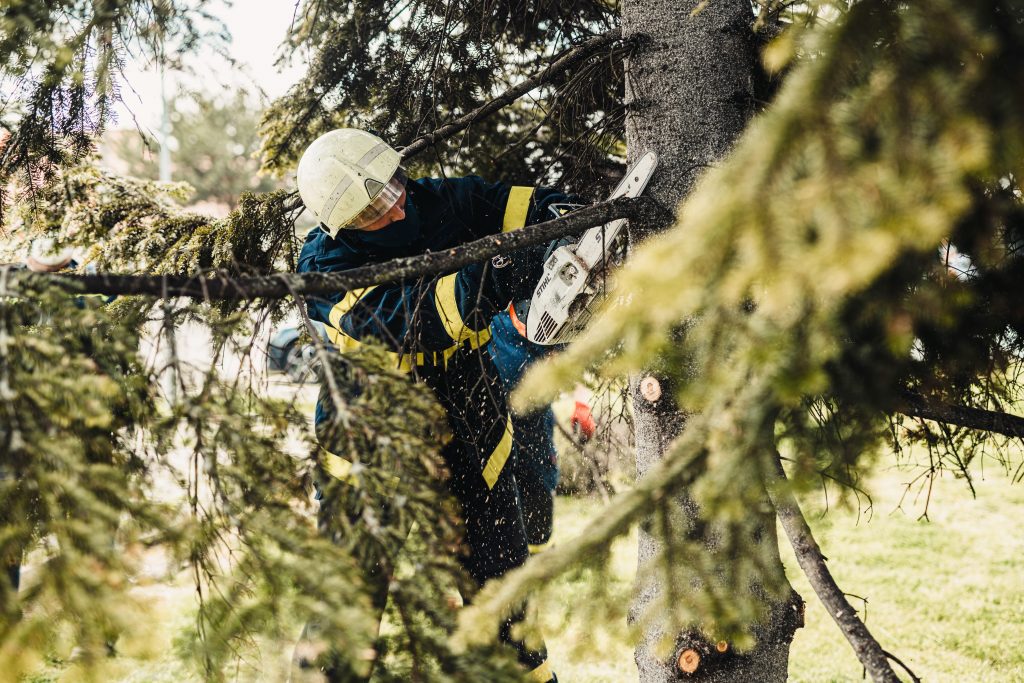
Air pollution is a pressing global issue that poses significant threats to human health, ecosystems, and the environment. Urbanization and human activities have led to increased emissions of pollutants, contributing to poor air quality and exacerbating climate change. In the fight against air pollution, trees play a crucial role in providing a range of ecosystem services that help improve air quality, regulate climate, and mitigate the impacts of pollution. This article explores the myriad ways trees offer ecosystem services related to air pollution and highlights their value in urban areas and beyond.
Air pollution refers to the release of harmful substances, such as particulate matter (PM), nitrogen dioxide (NO2), carbon dioxide (CO2), and other atmospheric pollutants, into the air. These pollutants can originate from various sources, including car exhaust, industrial activities, and wildfires. Inhaling polluted air can lead to severe health issues, including respiratory problems, cardiovascular diseases, and even premature death. Additionally, air pollutants contribute to climate change by increasing greenhouse gas (GHG) concentrations and global average temperatures.
Trees act as natural air purifiers by absorbing and filtering pollutants from the air. Their leaves, bark, and roots trap and absorb airborne particles, such as PM10 and PM2.5, as well as harmful gases like NO2 and CO2. Trees then convert these pollutants into plant tissue or release them into the soil, where they are broken down by beneficial microorganisms.
Trees play a significant role in combating climate change by acting as carbon sinks. Through photosynthesis, trees absorb CO2 from the atmosphere and store it as carbon in their tissues. This carbon sequestration helps reduce the concentration of CO2, a potent greenhouse gas, in the atmosphere, thus mitigating the greenhouse effect and global warming.
Urban areas face unique challenges concerning air pollution due to the concentrated human activities and emissions. The presence of trees in cities creates urban forests and green spaces that contribute to cleaner air. Research has shown that strategically planting trees in urban areas can help regulate air quality and reduce the harmful effects of air pollutants on human health.
Particulate matter (PM) is one of the most harmful air pollutants, especially the fine particulate matter (PM2.5) that can penetrate deep into the respiratory system. Trees, with their canopy structure and leaf surfaces, can capture and retain PM, effectively lowering its concentrations in the air. Studies using the i-Tree model have provided valuable data on the air pollution removal potential of urban trees and their contribution to improving air quality.
While trees, in general, offer vital ecosystem services, the selection of tree species is essential for maximizing their benefits. Native trees are well-adapted to the local environment and support local biodiversity, making them preferable choices for urban greening projects. Non-native species may have unintended consequences, such as displacing native vegetation or being more susceptible to pests and diseases.
The presence of diverse tree lineages in urban areas can foster biodiversity and ecological resilience. Maintaining a variety of tree species increases the chances of some trees adapting well to changing climatic conditions, pests, and diseases, which is particularly relevant in the context of climate change.
Barcelona, a city renowned for its urban forestry initiatives, has been at the forefront of using trees to combat air pollution and improve the urban environment. Through careful planning and species selection, Barcelona’s urban forests have made significant contributions to air quality regulation, carbon sequestration, and enhancing biodiversity.
Despite the many benefits trees offer in mitigating air pollution, several challenges and threats must be addressed to ensure their continued effectiveness. Urban development and deforestation can lead to the loss of tree cover, reducing the capacity of trees to mitigate air pollution. Moreover, non-native invasive species can disrupt local ecosystems and hinder native tree populations.
Trees are a crucial component of ecosystems, offering invaluable services in mitigating air pollution and combating climate change. By understanding the multiple benefits trees provide, from air pollution removal to carbon sequestration and beyond, policymakers, communities, and individuals can make informed decisions to promote urban greening and support tree conservation efforts. Emphasizing the value of trees in urban areas and beyond will lead to healthier cities, improved air quality, and a more sustainable future for all.
[geocentric_weather id=”45ff4ccd-3d3f-498e-b0b9-91aaaf766bc4″]
[geocentric_about id=”45ff4ccd-3d3f-498e-b0b9-91aaaf766bc4″]
[geocentric_neighborhoods id=”45ff4ccd-3d3f-498e-b0b9-91aaaf766bc4″]
[geocentric_thingstodo id=”45ff4ccd-3d3f-498e-b0b9-91aaaf766bc4″]
[geocentric_busstops id=”45ff4ccd-3d3f-498e-b0b9-91aaaf766bc4″]
[geocentric_mapembed id=”45ff4ccd-3d3f-498e-b0b9-91aaaf766bc4″]
[geocentric_drivingdirections id=”45ff4ccd-3d3f-498e-b0b9-91aaaf766bc4″]
[geocentric_reviews id=”45ff4ccd-3d3f-498e-b0b9-91aaaf766bc4″]